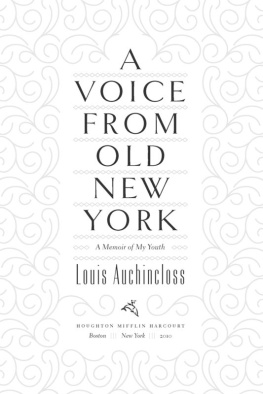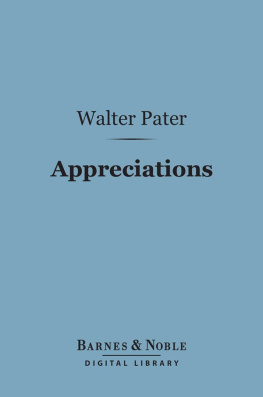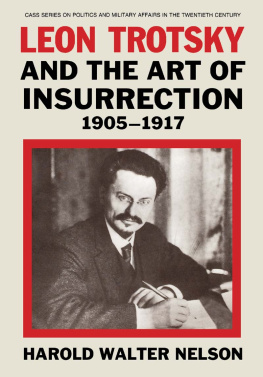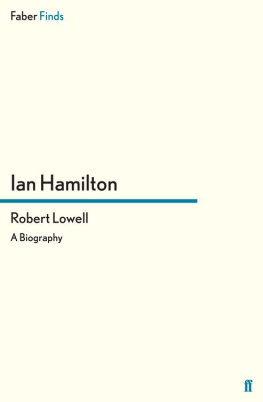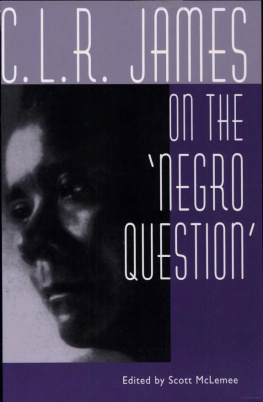Copyright 1996 by Louis Auchincloss
All rights reserved
For information about permission to reproduce selections from this book, write to Permissions, Houghton Mifflin Harcourt Publishing Company, 215 Park Avenue South, New York, New York 10003.
www.hmhbooks.com
The Library of Congress has cataloged the print version as follows:
Auchincloss, Louis.
The man behind the book : literary profiles /
Louis Auchincloss.
p. cm.
ISBN 0-395-82748-5
1. AuthorsBiography. 2. Literature, ModernHistory and criticism. I. Title.
PN 451. A 94 1996
809'.04 DC 20 96-19047
CIP
e ISBN 978-0-547-97116-2
v1.0613
Dumas fils, Sarah Orne Jewett, The Abb Mugnier andIris Origo were originally published in The New Criterion,and Lord Bryce in American Heritage.
For my good friend
T HEODOREC.R OGERS,
who has brought a living theatre of classics
to the youth of New York City
Introductory Note
The writers discussed have little in common except, as in most compilations of literary essays, that each, at one point or another of my life, has meant a great deal to me as a reader and writer. Many of them no longer enjoy today the vogue they enjoyed in their lifetime, and in these cases it has been my interest to explore the reasons for their fall from grace and seek the portions of their work that may still merit attention. It is impossible for all worthy artists to survive, particularly in a world that produces, with its expanding population, so many more of them than ever before, and it behooves us to carve out of too unwieldy a body of work what should not be lost.
Cyril Tourneur
C YRIL T OURNEUR (1580?1626) can hardly be said to have had a literary life, as we know very little about his life at all. There are scholars who even doubt that he was the author of the two plays traditionally attributed to him, The Revengers Tragedy and the much inferior Atheists Tragedy, printed in 1607 and 1611, but I choose not to enter this fray, being firmly convinced, on grounds of style alone, that T. S. Eliot was correct in his conclusion that both plays were the work of one man and that man not any of the other Jacobean dramatists. So to me he is the Cyril Tourneur who was reputed to have been in the service of the powerful Cecil clan and to have gone as a soldier to the Lowlands, and to have died of a plague while on the naval raid of the Spanish fleet in Cdiz. Beside the two tragedies he was also the author of some miscellaneous items of poetry and prose, including an elegy on the death of Prince Henry, heir to James I. Except for The Revengers Tragedy, written presumably when he was in his twenties, there is little to deduce that he led a literary life at all.
Marcel Schwob, the French poet, has fantasized that Tourneur was born of the union of an unknown god with a prostitute in a day of darkness, in a year of plague of which his mother died, and that the door of the little house in which he was born was scrawled over with the fatal cross of red, while the mournful tolling of a bell heralded the approach of the ghastly, creaking tumbril which did service for a common hearse.
T. S. Eliot quite properly deplores this as literary criticism, but it does represent a natural speculation as to what sort of man could have written The Revengers Tragedy, that flaming, gripping, hideous vision of life, unique even in an age of gory melodrama. Eliot himself admits that the play is a document on humanity chiefly because it is a document on one human being, Tourneur; its motive is truly the death motive, for it is the loathing and horror of life itself. To have realized that motive so well is a triumph; for the hatred of life is an important phaseeven, if you like, a mystical experiencein life itself.
The violence of the plays language tends to find its way into the prose of the critics who admire it. Here is Swinburne:
There never was such a thunderstorm of a play: it quickens and exhilarates the sense of the reader as the sense of a healthy man or boy is quickened and exhilarated by the rolling music of a tempest and the leaping exultation of its flames. The strange and splendid genius which inspired it seems now not merely to feel that it does well to be angry, but to take such keen enjoyment of that feeling, to drink such deep delight from the inexhaustible wellsprings of its wrath, that rage and scorn and hatred assume something of the rapturous quality more naturally proper to faith and hope and love.
And Allardyce Nicoll, describing the opening scene of The Revengers Tragedy in his beautiful edition of Tourneur, is all but carried away:
The setting is a gloomy hall, oak-panelled and tapestry-hung, in a Renaiscence palace. Two servants, bearing their sputtering torches aloft, lead in a strange procession: a grey-haired Duke, in whom the lines of age are cruel and hardhis Duchess, whose form is florid and voluptuoushis son whom debauchery has already made oldand the Dukes bastard, hatred and envy gleaming from his eyes. The fluttering flames of the torch-light catch their evil faces as they pass by; stray rays of light, too, search fitfully into the dimmer reaches of the hall, and in their search succeed faintly in outlining a dark figure, muffled close and staring madly at the group now moving into the corridor beyond. In his hands, deep-clasped lovingly and bitterly to his bosom, this dark figure clutches something white and ghastly, which a sudden turn of a departing torch reveals as a womans skull.
The dark figure, of course, is Vindice, the revenger, and the skull is that of the woman he loved and whom the duke had secretly poisoned for rejecting his lewd advances. Now, that is certainly a wrong justifying the most savage revenge. But the point that Eliot makes about the play is that the dukes crime hardly justifies the horror that Vindice and his brother Hippolito feel for the whole world in which they live. Eliot emphasizes that the cynicism, the loathing and disgust of humanity are immature in that they exceed the object. In this, the play is comparable to Hamlet, where the heros disgust at the Danish court (at least before he discovers that his father has been murdered) is hardly justified by the simple fact of his widowed mothers admittedly hasty remarriage.
This excess of disgust is important in any search for the personality and literary intention of the author. Certainly the ducal court in The Revengers Tragedy is a corrupt one. But as the play opens, the wrong inflicted upon Vindice, though terrible, is a single one. Otherwise the court has not touched him. It is alleged that his late father had lacked advancement and died bitterly in genteel poverty, but it is never made clear to what extent the duke or his court were responsible for this. The dukes son and heir, Lussurio, will soon attempt to seduce Vindices sister, Castiza, a killable offense in Jacobean drama, and will ignorantly employ Vindice, now disguised, to be his pandar, but Lussurio never succeeds: Castiza remains as pure as her name implies.
Nor do any of the other crimes in the unfolding drama affect Vindices honor. The dukes youngest stepson rapes the wife of an elderly noble, and Vindices brother and confederate, Hippolito, joins those who pledge revenge, but the raper suffers execution by a double miscarriage of justice without their having to act. The dukes bastard, Spurio, commits adultery with the duchess and plots to kill the heir; the heir plots to kill him, and the duchesss two older sons plot to kill the heir and then each other. Vindice appears to conclude from this concatenation of intended crimes that the murder of his beloved was really the deed of a rotten society rather than of its sovereign alone, and he brandishes her skeleton as a doom to the world he proceeds to obliterate in a welter of killings.
Next page

